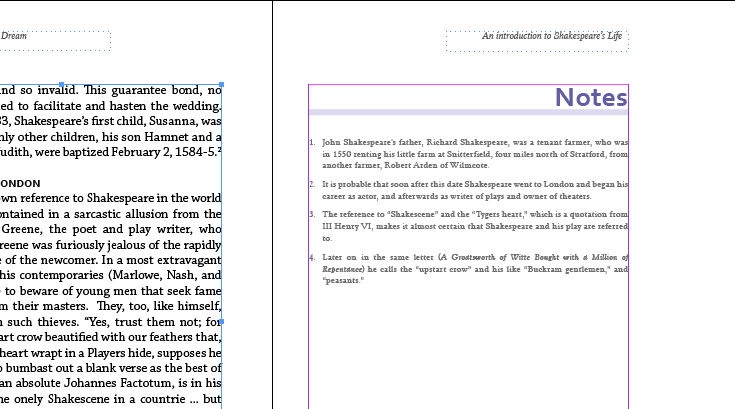
On specific systems, PageList is used, which shows the reader the print page numbers as they read. Notes and Bibliography Format: Footnotes: This format requires the author to credit the sources of borrowed information with either footnotes or endnotes. This enables the reader to click the page numbers and move to their desired location.
Footnote endnote example code#
For indexes, the page numbers of your print book are included in the HTML code of both the Kindle and ePub formats, and they serve as anchors. We provide two-way clickable links for endnotes and footnotes for seamless navigation in both epub formatting and kindle formatting services. Whether you’ve used a specific referencing style like Harvard or merely want to show additional information in your endnotes in a much more formal way, we will make sure that they’re expertly formatted. Example: Footnote placement Although reduced caffeine intake had noticeable short-term effects on the subjects’ moods and energy levelsthis was measured using multiple methods 2 their energy levels did not fluctuate as frequently as those in the control group (whose daily caffeine intake was not reduced 3 ). Footnotes writing a paper yourself, but also as you read articles, books and other research material.
Footnote endnote example manual#
If you’ve decided to include footnotes, endnotes, and indexes in your eBook, the great news is that we can perfectly format them to ensure they’re professionally presented to your readers. While APA style discourages the use of footnotes in most circumstances, footnotes are used in the Chicago Manual of Style (CMS). Providing your references is a great way to build trust with your readers, but it’s also time-consuming, and references can be listed in so many different ways. These are appropriate for non-fiction books, as authors want to show the references they’ve used to gain credence with their e-readers. Olaf Press, 2010), 115 but see Mary Beth Miller, The wiki Revolution (New York: New Tech Press, 2018), 48. They cite references or comment on a designated part of the text above it. For example, if Millers work reached a conclusion that was contrary to the conclusion Daily reached, your footnote might look something like this: Reginald Daily, Timeless wikiHow Examples: Through the Ages (Minneapolis: St. University of Georgia: Athens, GA.Depending upon the type of manuscript you have produced, you might need to include footnotes, endnotes, and indexes. What is a footnote example Footnotes are notes placed at the bottom of a page.

(RTI) implementation using a philosophical hermeneutic frame. However, throughout the rest of the paper, I will refer to the law as IDEA, as that is the widely recognized acronym.Ģ) For additional language from the legislation, see appendix A.ģ) Previously, a student was found eligible for a specific learning disability through the use of standardized measures of mental ability and achievement to determine if a discrepancy existed between the two. What do I write in a footnote Footnotes or endnotes acknowledge which parts of their paper reference particular sources. Return to your place in the document by double-clicking the number or symbol at the beginning of the note. Enter what you want in the footnote or endnote. The addition of the word "Improvement" is significant, in light of the new focus on student outcomes rather than merely on equal access. On the References tab, select Insert Footnote or Insert Endnote. Policy implementation as situated dialogue: A case study of response to interventionġ) Although the legislation was renamed at the time of reauthorization in 2004, it is still widely referred to in the literature and practice as IDEA. By 2007, a year after the regulations for IDEA were finalized, all but

This process is most commonly referred to as Response to Intervention, or RTI. Instead, the legislation allowed for the use of a process "based on the child's response to scientific, research-based intervention" (Duffy, 2007, p. This provision banned the requirement of a discrepancy model in the identification of students with specific learning disabilities. When the Individuals with Disabilities Education Act (IDEA) was reauthorized in 2004, it was renamed the Individuals with Disabilities Education Improvement Act (IDEIA) 1 and included a provision for states to use a process of measuring how a student responds to research-based interventions in the determination of eligibility under the category of specific learning disability: "In determining whether a child has a specific learning disability, a local educational agency may use a process that determines if the child responds to scientific, research-based intervention" (20 U.S.C. Endnote: An endnote is the same as a footnote in that it gives a credit or additional information to the reader.


 0 kommentar(er)
0 kommentar(er)
